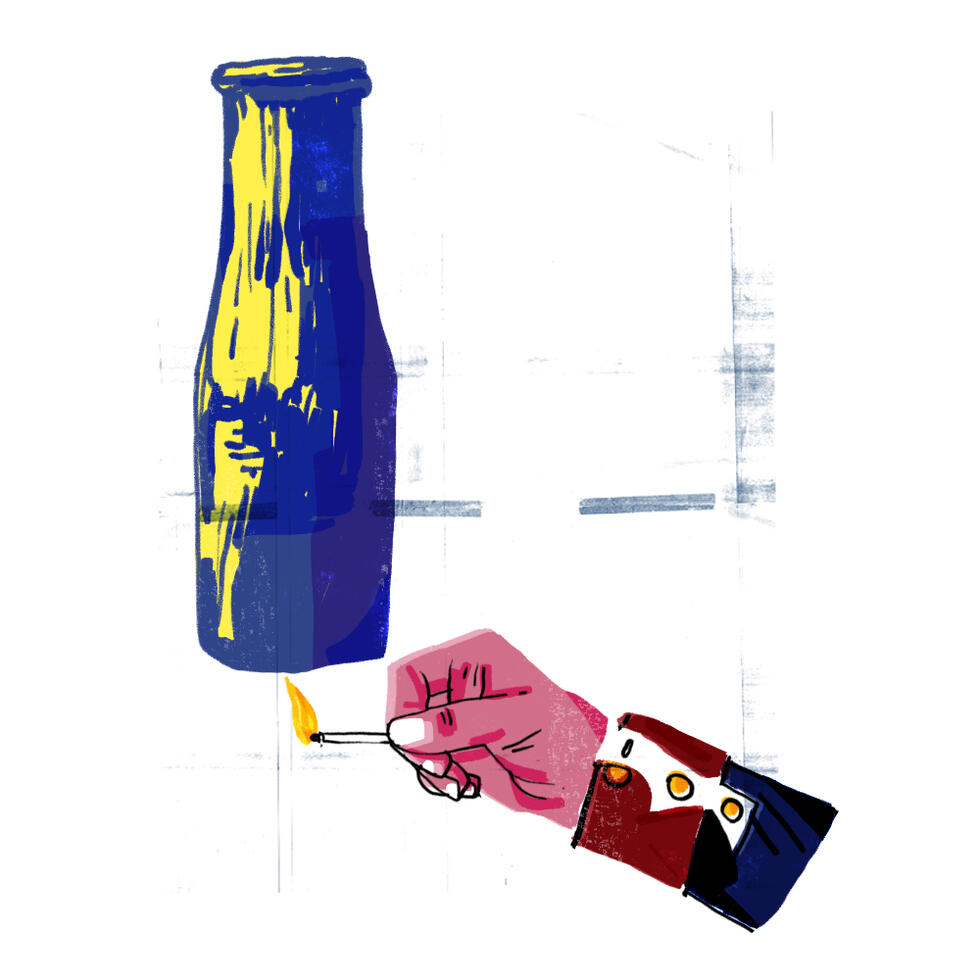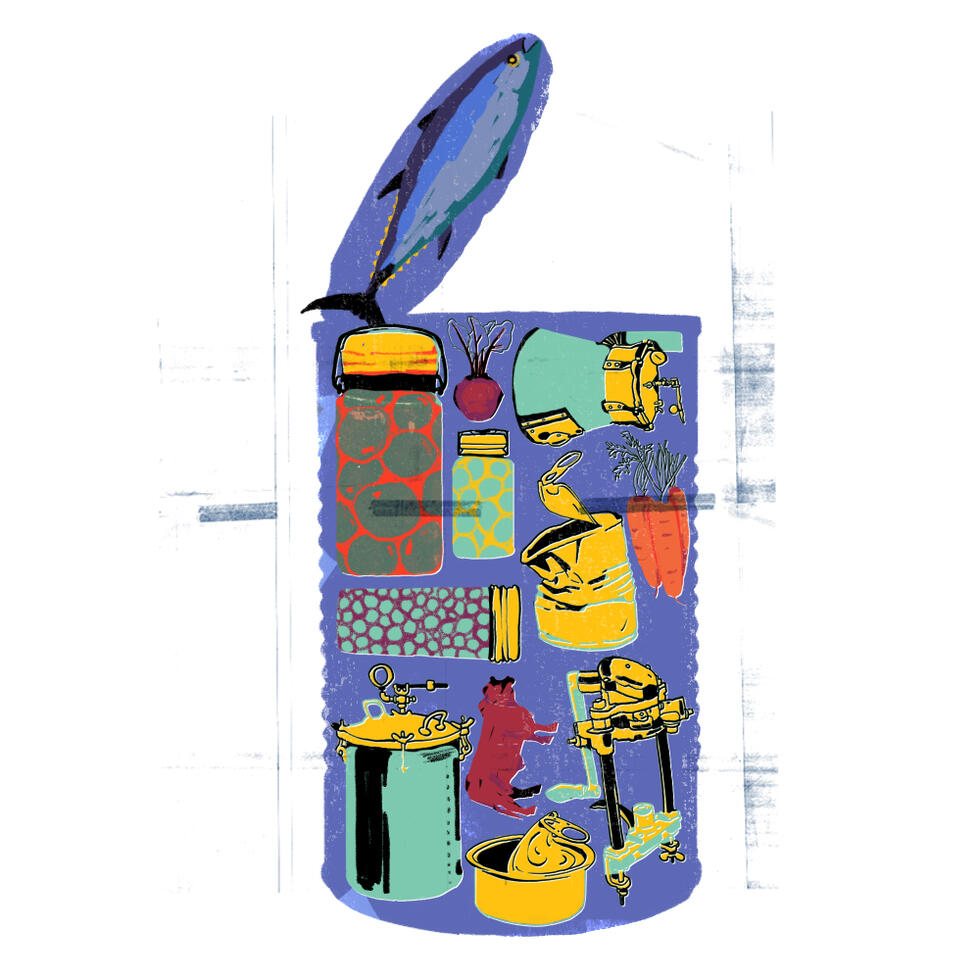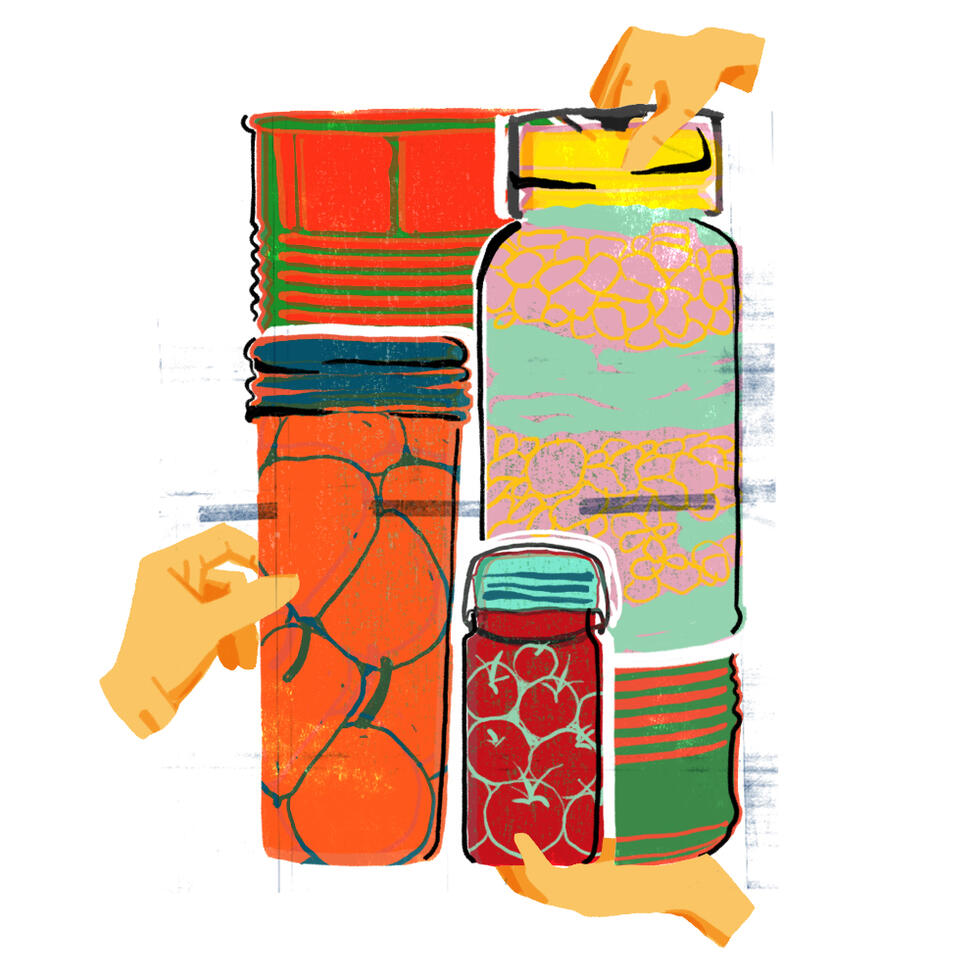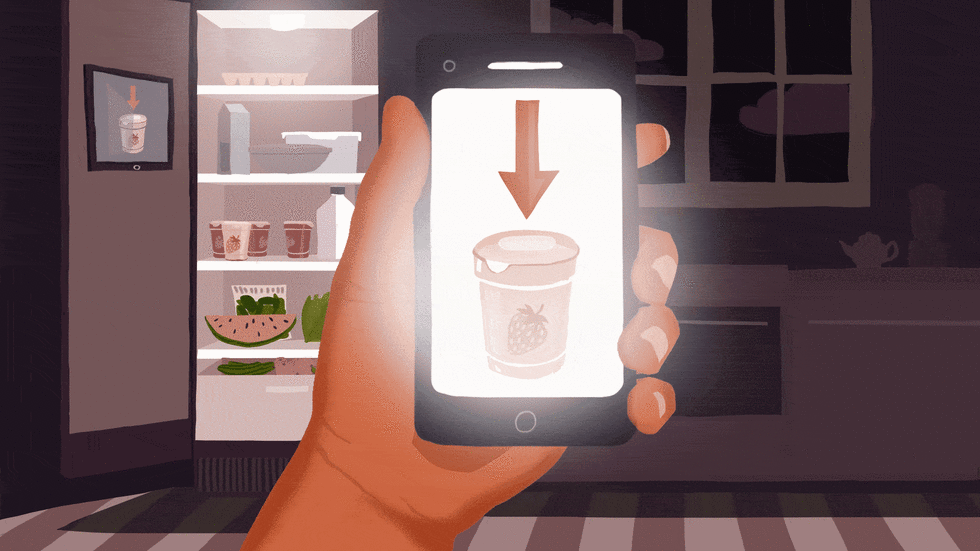Cans can
The tin can is the epitome of a mass-produced product. However, its huge success is based on many individual innovations. And the story of this cylindrical tin container is far from over.

In 1962 Andy Warhol painted 32 soup cans on 20 by 16-inch canvases. After completing the final brushstroke, the New York artist hung the paintings on the wall, one above another. Observers feel as if they are standing in front of a supermarket shelf. The “Campbell’s Soup Cans” marked the breakthrough of the Pop Art movement.
But for the tin can, this was already the second major success story. The sheet metal packaging celebrated its real triumph around 1900, when it became a household staple. But it took almost a century to get there. And many individual inventions.
1810: Heat preserving

This story begins with Napoleon. He assumed leadership of the French army in 1795 and wanted to find a solution to feed his vast armies on the battlefield. Pillaging and plundering no longer sufficed. So the war-loving Corsican pledged 12,000 gold francs to the person who could develop a new process that effectively preserves food. Until then, the results of various conventional techniques, such as salting, drying, desiccation, or smoking, were not very satisfactory.
The breakthrough came 15 years later: The French confectioner Nicolas Appert pocketed the prize money – for “the art of preserving all animal and vegetable substances for several years”. Appert’s insight: Food products do not spoil if they are hermetically sealed in glass bottles and then sterilized in a hot water bath. Since the airtight seal prevents new microorganisms from infiltrating the food, decomposition is prevented. Heat preserving was a revolution.
Also in 1810: The tin can

However, glass bottles are heavy and fragile – rendering them highly impractical for the battlefield. The shrewd merchant Peter Durand capitalized on this. In 1810, he purchased a promising idea from the French technician Philippe Henry de Girard: the preserving can constructed from tin. The shatterproof material does not have to be as thick as glass and at that time, cold rolling already made it possible to produce relatively thin sheet metal. Its tin coating protects the metal against corrosion. Formed into a cylindrical can, the result is durable, lightweight packaging. Durand patented the invention and sold it to two British entrepreneurs, who founded the world’s first commercial can factory.
1858: The can opener
However, eating canned food remained a risk. Once sealed airtight, the container can only be opened using force. The soldiers used their bayonets – resulting in the occasional loss of a finger. The solution came in 1858, when the British inventor Robert Yeates patented the first can opener. Its principle: One hook holds on to the edge of the lid, while a second one pokes holes in the tin at short intervals, creating a split. The cutting-wheel can opener made its début in the United States in 1870.
Around 1900: Can seamer and autoclave
Canning presented two additional risks: Back when cans were still sealed by hand, solder occasionally leaked into the food – resulting in the deaths of many soldiers from lead poisoning. The second risk involved the sterilization process: Sometimes, not all bacteria died. Insufficiently sterilized canned meat, for example, is an ideal breeding ground for the lethal botulinum toxin (Botox).
Industry 2.0 put an end to this canned Russian roulette: Now, specialized machines seal the cans. And inside an autoclave – a pressurized container – even the most resilient microbes cannot survive for long; temperatures far above the 100-degree Celsius water boiling point guarantee this.
In any case, industrial production changed everything: While it used to take a craftsman a full hour to manufacture a single can, industrialization made the entire process extremely fast:
- Cut the can body, lid, and base from a single piece of sheet metal
- Bend the body and weld it together
- Attach the base
- Fill the can and seal it hermetically
- Heat the can in an autoclave
Why the tin can is cylindrical and corrugated
Canned food is heated after it has already been sealed in an airtight container – this is how Nicolas Appert’s preserving technique works. The problem: As the temperature rises, the volume of the can’s contents increases – and so does the pressure on the packaging. The solution: the shape of the tin can. Since the contents expand spherically, the cylindrical can is able to withstand the pressure far more effectively than a square container.
The distinctive corrugations provide exceptional stability, which is also important when the cans are stacked. They evenly distribute the pressure over the surface of the can. It is the same principle that makes corrugated cardboard so stable: The juxtaposed grooves greatly increase the rigidity of the material.
Ready for the masses

As far back as the year 1900, 700 million cans were produced in the United States alone. Soon they were feeding more soldiers than ever before. Much later, the famous writer George Orwell would declare: Without the tin can, the First World War would never have happened. But now that mass production had greatly reduced the prices, the general population could also afford canned food.
In 1933, the beverage can started its rise to stardom: In that year, the Gottfried Krueger Brewing Company launched canned beer, and the New Jersey brewery’s sales soared by more than 500 percent. Not long after, the Coca-Cola Company started testing the use of cans. But the development took time; the very first can of Coke did not hit the shelves until 1960. Due to the even more malleable nature of aluminum, it was soon made of this material – as were most other beverage cans. The Coke can joined canned beer as a big seller.
One person, however, was unimpressed: Andy Warhol. When the Pop Art icon turned his attention to Coca-Cola in the 1960s, he was only interested in the bottle. He used it as a model to create an entire series. Warhol’s “Coca Cola Bottles” are conceivably as famous today as his “Campbell’s Soup Cans”.
Everything has its beauty, but not everyone sees it.
And the story goes on
The development of the can is still ongoing. Currently, industry and science are primarily focused on making canned food greener and healthier. Current initiatives include:
- Thinner can walls: Aluminum in particular is regarded as harmful to the environment. The arguments against it include that its production causes rainforest deforestation, consumes enormous quantities of electricity, and generates toxic by-products. Although today the material is being recycled. But even with high recycling rates, new raw materials are still necessary. The industry is trying to curb this demand by reducing the thickness of can walls. Today, the aluminum used to produce cans is as thin as 0.07 mm, which corresponds to a weight of less than 10 grams for a 0.33-liter can. In 1930, it was 100 grams.
- Coatings that pose no health risks: Modern food preserving cans have a coating on the inside. This guarantees that no heavy metals can contaminate the food, while also protecting the packaging from food acids. However, conventional coatings for cans contain Bisphenol A, a substance that disrupts the human hormone system. Now, the Fraunhofer Institute for Manufacturing Engineering and Automation in Stuttgart is developing coatings that do not contain this substance.
- New processes for more vitamins: Although modern food cans retain around 70 percent of the vitamins, this figure is set to rise. Researchers at the University of Hohenheim have already achieved this for vegetables. In their process, vegetables are first immersed in a calcium-rich liquid, and the airtight can is then subjected to various temperatures in such a way that harmful enzymes are deactivated, while desirable ones are activated. This not only preserves more nutrients but also helps keep the vegetables crisp.
Written by:
Illustration: Nguyen Tan





